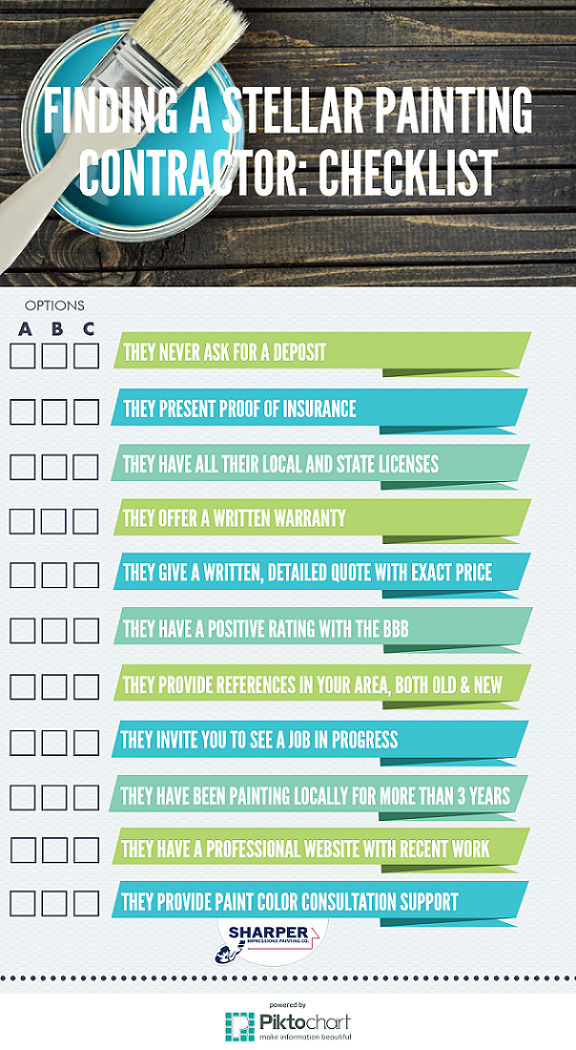The Influence Of Weather Condition On Your Commercial External Painting Task Is Extensive-- Explore Exactly How It Can Either Boost Or Weaken Your Outcomes
The Influence Of Weather Condition On Your Commercial External Painting Task Is Extensive-- Explore Exactly How It Can Either Boost Or Weaken Your Outcomes
Blog Article
Write-Up Author-Cash Dohn
When you're preparing an industrial external paint task, don't ignore the impact of climate on your results. You need to consider factors like temperature, humidity, and precipitation, as they can make or damage your paint work. For instance, did you understand that ideal conditions require specific temperature ranges and humidity levels? Failing to keep an eye on these aspects can lead to uneven coatings or even damage to fresh paint. Understanding these components is crucial to accomplishing a long-lasting, professional outcome. So, what particular climate condition should you watch out for?
Temperature level Considerations
When it comes to commercial outside painting, temperature plays a vital role in the outcome of your job. If you're repainting in severe warmth, the paint can dry out also rapidly, resulting in problems like poor attachment and uneven coatings. You intend to aim for temperature levels between 50 ° F and 85 ° F for the best results. Below 50 ° F, paint may not treat correctly, while above 85 ° F, you run the risk of blistering and cracking.
Timing your project with the right temperatures is important. Start your work early in the early morning or later in the afternoon when it's cooler, specifically during warm months.
Additionally, take into consideration the surface area temperature level; it can be substantially more than the air temperature level, specifically on bright days. Use a surface area thermometer to inspect this before you begin.
If temperatures are uncertain, watch on the weather prediction. Sudden temperature level decreases or warm front can derail your strategies. You do not intend to start painting just to have the problems alter mid-project.
Moisture Levels
Moisture degrees significantly impact the success of your industrial outside paint job. When the humidity is too high, it can prevent paint drying out and treating, causing a variety of concerns like inadequate adhesion and finish top quality.
If you're intending a task during wet conditions, you could locate that the paint takes longer to dry, which can extend your project timeline and rise costs.
On the other hand, reduced moisture can likewise pose obstacles. Paint might dry too swiftly, avoiding proper application and causing an unequal coating.
https://knoxtgtdn.newsbloger.com/33880933/from-principle-to-development-understanding-pinterest-inspired-painted-interiors 'll intend to keep an eye on the humidity degrees carefully to guarantee you're working within the perfect array, typically between 40% and 70%.
To obtain the most effective results, take into consideration making use of a hygrometer to determine humidity prior to beginning your project.
If you find the levels are outside the ideal range, you might need to change your routine or choose paints made for variable problems.
Always seek please click the next post from the supplier's standards for particular suggestions on humidity resistance.
Rainfall Impact
Rainfall or snow can substantially disrupt your industrial outside painting strategies. When rainfall takes place, it can remove freshly used paint or develop an unequal coating. Preferably, you intend to pick days with dry weather condition to guarantee the paint sticks appropriately and remedies efficiently. If you're caught in a shower, it's best to halt the project and wait on problems to improve.
Additionally, snow can be even more destructive. Not just does it develop a wet surface area, but it can additionally reduce temperature levels, making it tough for paint to dry. This can result in issues like peeling off or blistering down the line.
It's critical to examine the weather prediction before starting your task. If rain or snow is forecasted, think about rescheduling.
Constantly remember to permit ample drying time in between layers, especially if the weather continues to be uncertain.
Conclusion
In conclusion, watching on the climate is essential for an effective industrial external painting job. By monitoring temperature, moisture, and precipitation, you can make certain the very best problems for application and curing. Bear in mind to plan your job around desirable weather and always follow manufacturer standards. With the ideal approach, you'll achieve a durable, beautiful finish that can stand up to the elements. https://www.influencive.com/pro-exterior-painting-tips-to-make-your-house-look-picture-perfect/ let the weather catch you off-guard-- remain educated and paint wise!
